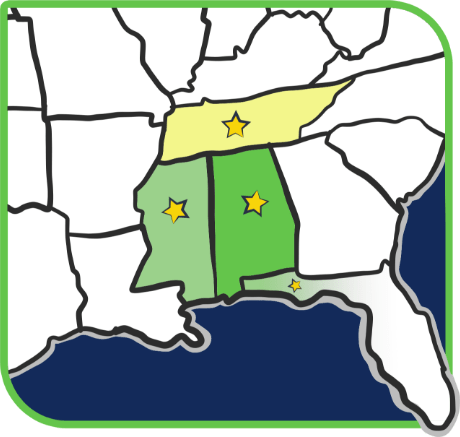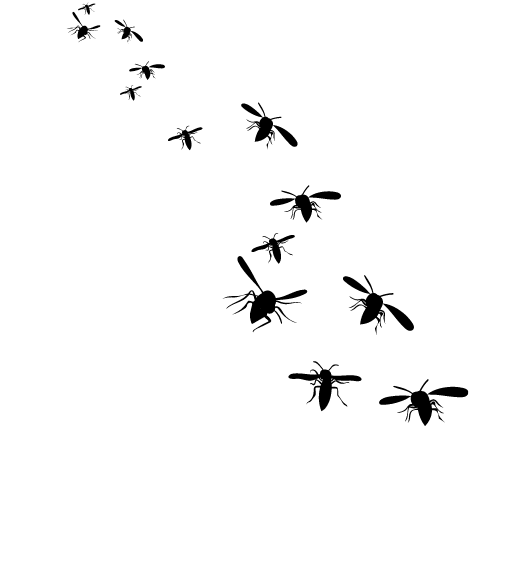WAYNES PEST CONTROL
Your Pest Control Safeguard
When you have pest and lawn problems, you’ll want fast, reliable solutions. That’s what Waynes Pest Control delivers with a philosophy that every little thing matters—and it matters a lot. So, we won’t settle for less when providing you with our exceptional pest control services.

AREAS WE SERVICE
Professional Pest Control Services in Alabama, Tennessee, Mississippi, and the Florida Panhandle
Whether you’re searching for pest control services in Birmingham, Nashville, Huntsville, or any of our service areas, Waynes Pest Control can provide you with the reliable, highly effective services you want and deserve. Our expert service professionals don’t merely meet standards. We’re here to provide exceptional pest control services that set the standard in the industry and exceed expectations for our customers.
0
YEARSproviding service SINCE 1973
Customer Satisfaction
Average Star Rating on Google
0
THOUSANDCUSTOMERS PEST FREE
Residential Pest Control Services
The Enviropest Approach
Because we know that 95 percent of pest challenges start outside your home, we use a thoroughly comprehensive strategy to eliminate pests for good. This includes exclusion, extermination, and monitoring.

Pest Control Done Right
50 Years of Experience... 150,000+ Homes & Families Served.
Pest Control
Lawn Care
Mosquito Protection
Termite Protection


FEATURED SERVICES
Comprehensive Pest Control Solutions
TESTIMONIALS
What Our Clients Say About The Quality of our Pest Control Services
We have thousands of 5-star ratings and happy customers.

Best In Class
Pest Control & Lawn Services for your business
THIS IS WHO WE ARE
History of Waynes
We’ve been serving customers since 1973, steadily growing over the decades. How? By a strong commitment to providing world-class experiences for our customers and a quality experience for our employees. When our service professionals are fulfilled at work, they’ll go above and beyond for you.
Our team will take care of tasks around your home or business that you just don’t have time to do. This allows you to spend more time on things that truly matter. We currently have service centers in twelve cities across Alabama, Tennesee, and Mississippi—and we’re continuing to grow. To date, we’ve served more than 150,000 customers and when you’ve got a pest problem to solve, we’d love to add you to our list.
If asked to sum up everything about our company and philosophy in a single sentence, it would be this: Waynes Pest Control focuses on exceptional quality in all we do. That’s a promise.


Have A Question? Call Us Today!
Frequently Asked Pest Control Questions
In Alabama, Mississippi, and Tennessee, there’s no one right time for pest control because it’s a year-round endeavor. That’s largely because of our climate that pests enjoy as much as people do. Of course, the species of the pests may vary by the seasons, and they may prefer slightly different settings for where they feed, breed, and flourish—but, when left to their own devices, they’d be happy to habitat your property throughout the year.
When you have ongoing pest control services from a quality provider, though, you’ll never need to worry about infestations again. Waynes Pest Control will tackle current problems before turning our attention to keeping them out of your home—for good.
Exterminators, such as Waynes’ Pest Control service professionals, will identify pest infestations in a home or business and eliminate the current population. Some exterminators stop there. But not Waynes. Those are just the initial steps for us as we then focus on keeping the pests away from your home and lawn so you can enjoy your property without the stress of these unwanted critters.
We also place a strong emphasis on the safe application of products and communicating well with our customers (you!), explaining our services, and answering all of your questions.
In general, you’ll want to ensure that the service professionals can easily access areas of your home to perform inspections and, when it’s time, apply treatments. If there are dogs, you can put them somewhere secure. When it’s determined what pest remedies are needed to address your problem, the Waynes Pest Control service professionals will let you know what else, if anything, would need to be done. Each situation can be unique, so the answer to this question will depend upon the treatments performed.
Alabama and Mississippi’s subtropical climate and the associated humidity make it a prime place for pests to live and thrive. Because of the summers, which can be quite hot, and the winters—which can be colder than the pests prefer—the critters will often look for food, water, and shelter inside of Alabama homes, garages, and other outbuildings. The same problems can occur to homeowners living in Tennessee.
Once pests get inside, they can settle in. Although the specifics can vary by species, insects, rodents, and other pests can cause a significant amount of damage to Alabama, Mississippi, and Tennessee homes. Plus, pests can spread diseases to you, your family and guests, and your pests. So, you’ll want them out ASAP (and you probably don’t need us telling you that!).
With over 40 years of experience and over 150,000 homes and families serviced in Alabama, Mississippi, and Tennessee, our reputation for offering world-class service in these areas is a testament to just how committed we are to serving you.
So, if you need pest control services to take care of ants, cockroaches, fleas, mosquitoes, spiders, termites, rodents, or other pests, reach out by contacting us online or calling 1-866-929-6371 today.


Insights, Tips, and Tales from Our Pest-Free Blog
Latest from Waynes Blog
April 26 2024
One Tree Planted: Our Lawn Care Partnership
As Arbor Day approaches, it’s time to celebrate the beauty and importance of trees in our world. Trees are not just providers of oxygen, clean air, and shade; they’re also crucial in combating climate change. At Waynes Pest Control, we value the role of trees in our ecosystem and are proud to announce our partnership…
April 18 2024
Pest-Free Paws: Top Tricks to Deter Fleas & Ticks
Fleas and ticks are irritating little guys that can cause serious issues for your pets if left untreated. This blog gives a quick overview of fleas and ticks and offers a few tips on how to keep them at bay with a bit of preventative action. The 411 on Ticks & Fleas Ticks undergo a…
April 18 2024
Your Spring Green-Up: Factors and Strategies for a Lush Lawn
Spring is here, and it’s time to say goodbye to those snow shovels (well, not really for us Southerners). Now, let’s shift our focus to something more appropriate for us fair-weather folks – your lawn! The key to kicking off spring lawn care is giving it the chance to wake up slowly with the warmer…
One Tree Planted: Our Lawn Care Partnership
As Arbor Day approaches, it’s time to celebrate the beauty and importance of trees in our world. Trees are not just providers of oxygen, clean air, and shade; they’re also crucial in combating climate change. At Waynes Pest Control, we value the role of trees in our ecosystem and are proud to announce our partnership…
Learn More >Pest-Free Paws: Top Tricks to Deter Fleas & Ticks
Fleas and ticks are irritating little guys that can cause serious issues for your pets if left untreated. This blog gives a quick overview of fleas and ticks and offers a few tips on how to keep them at bay with a bit of preventative action. The 411 on Ticks & Fleas Ticks undergo a…
Learn More >Your Spring Green-Up: Factors and Strategies for a Lush Lawn
Spring is here, and it’s time to say goodbye to those snow shovels (well, not really for us Southerners). Now, let’s shift our focus to something more appropriate for us fair-weather folks – your lawn! The key to kicking off spring lawn care is giving it the chance to wake up slowly with the warmer…
Learn More >












